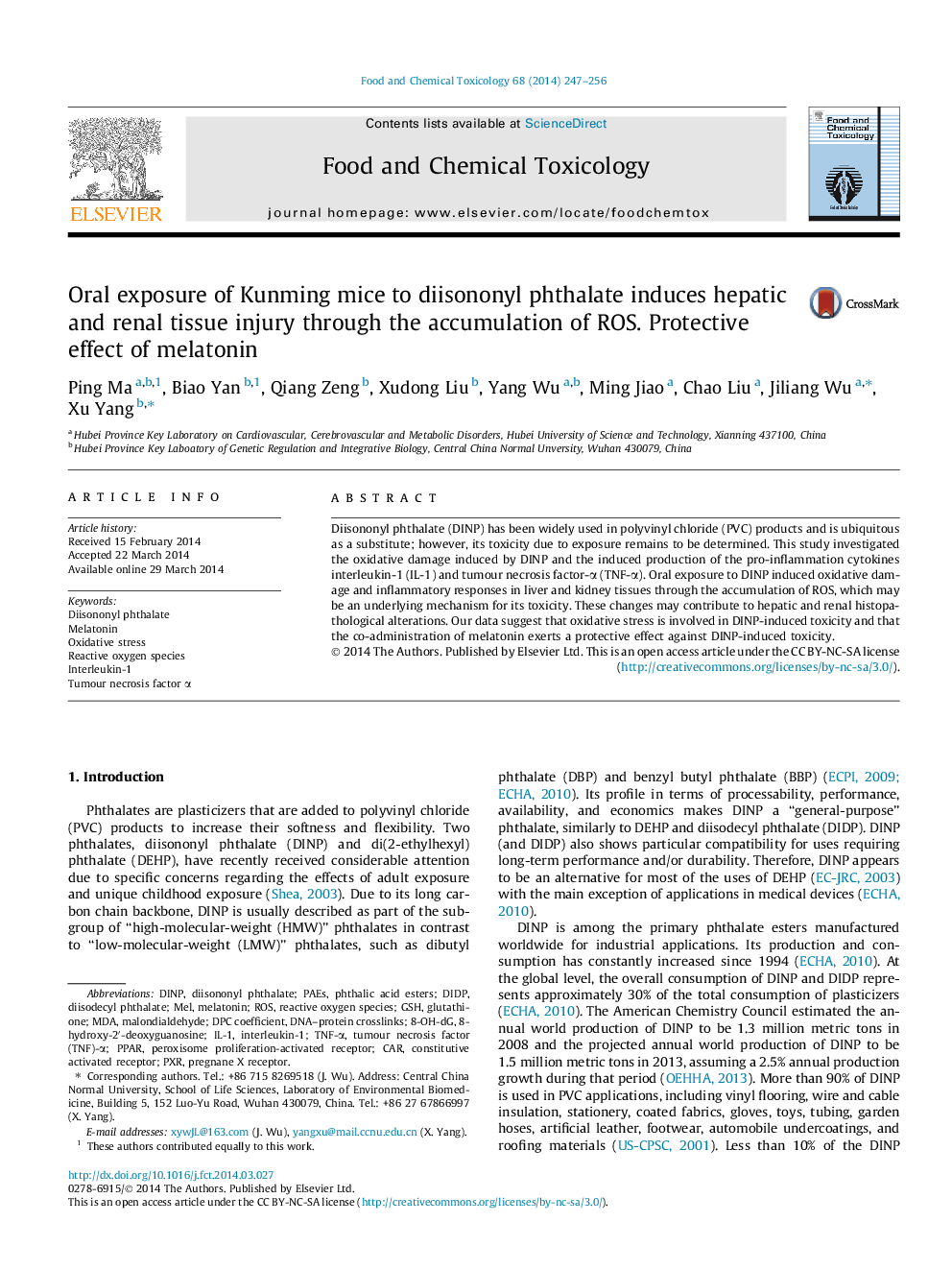| Article ID | Journal | Published Year | Pages | File Type |
|---|---|---|---|---|
| 5850527 | Food and Chemical Toxicology | 2014 | 10 Pages |
â¢DINP-exposed toxicity is associated with the overproduction of ROS.â¢Oral exposure to DINP is likely to present hepatic and renal tissue injury.â¢ROS accumulation maybe further causes IL-1 and TNF-α production at increased levels.
Diisononyl phthalate (DINP) has been widely used in polyvinyl chloride (PVC) products and is ubiquitous as a substitute; however, its toxicity due to exposure remains to be determined. This study investigated the oxidative damage induced by DINP and the induced production of the pro-inflammation cytokines interleukin-1 (IL-1) and tumour necrosis factor-α (TNF-α). Oral exposure to DINP induced oxidative damage and inflammatory responses in liver and kidney tissues through the accumulation of ROS, which may be an underlying mechanism for its toxicity. These changes may contribute to hepatic and renal histopathological alterations. Our data suggest that oxidative stress is involved in DINP-induced toxicity and that the co-administration of melatonin exerts a protective effect against DINP-induced toxicity.
Graphical abstractDownload full-size image
